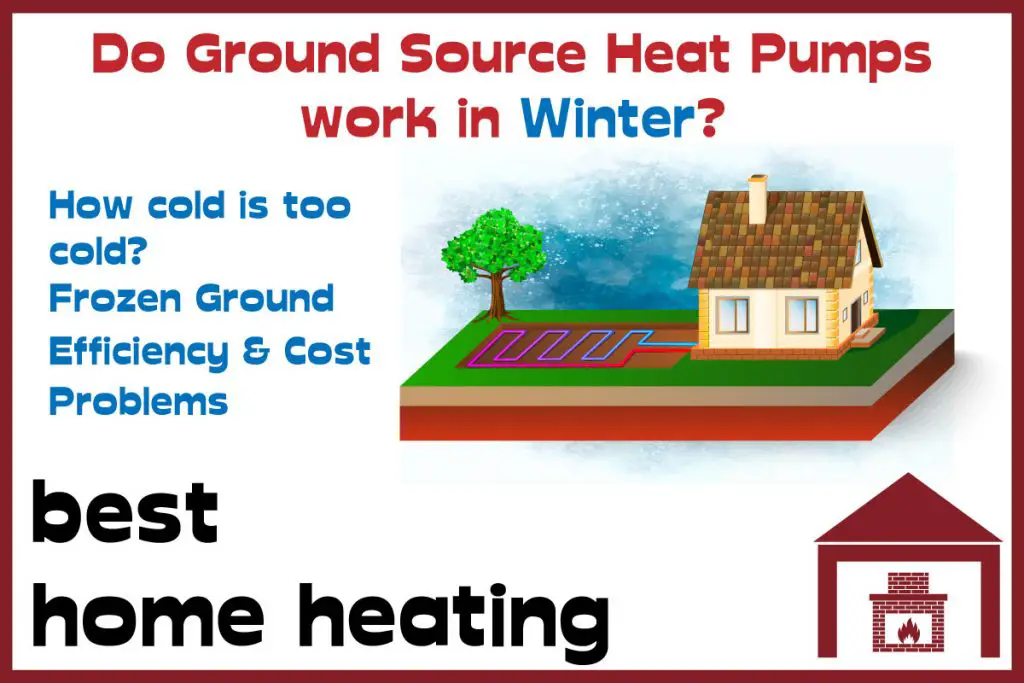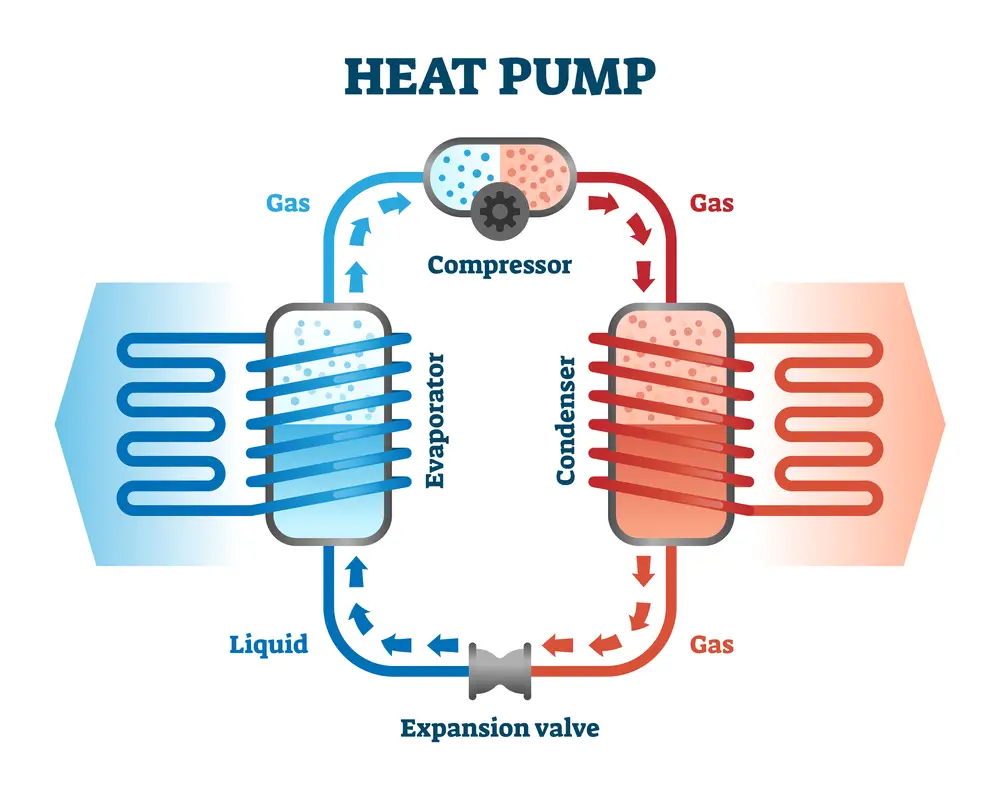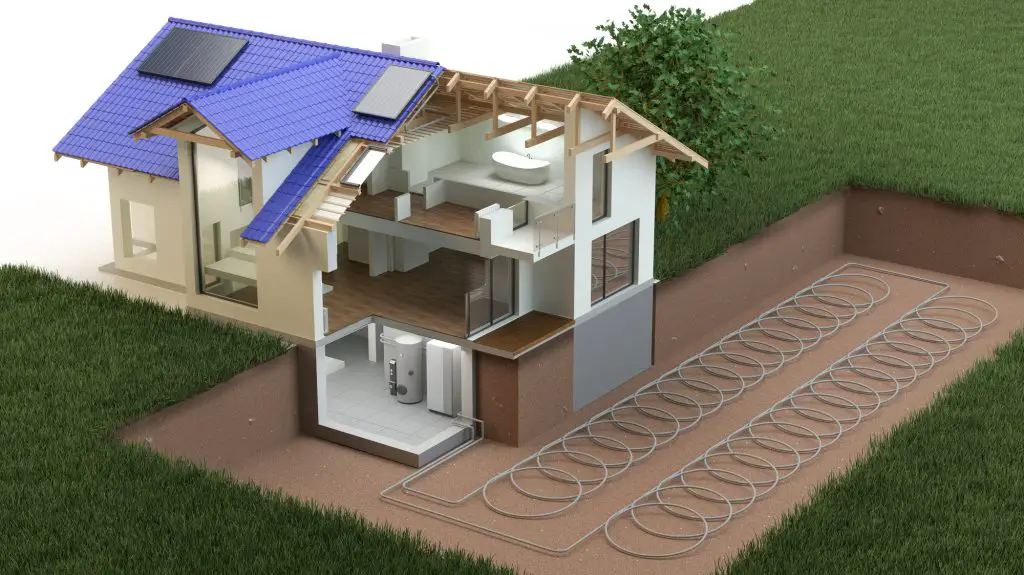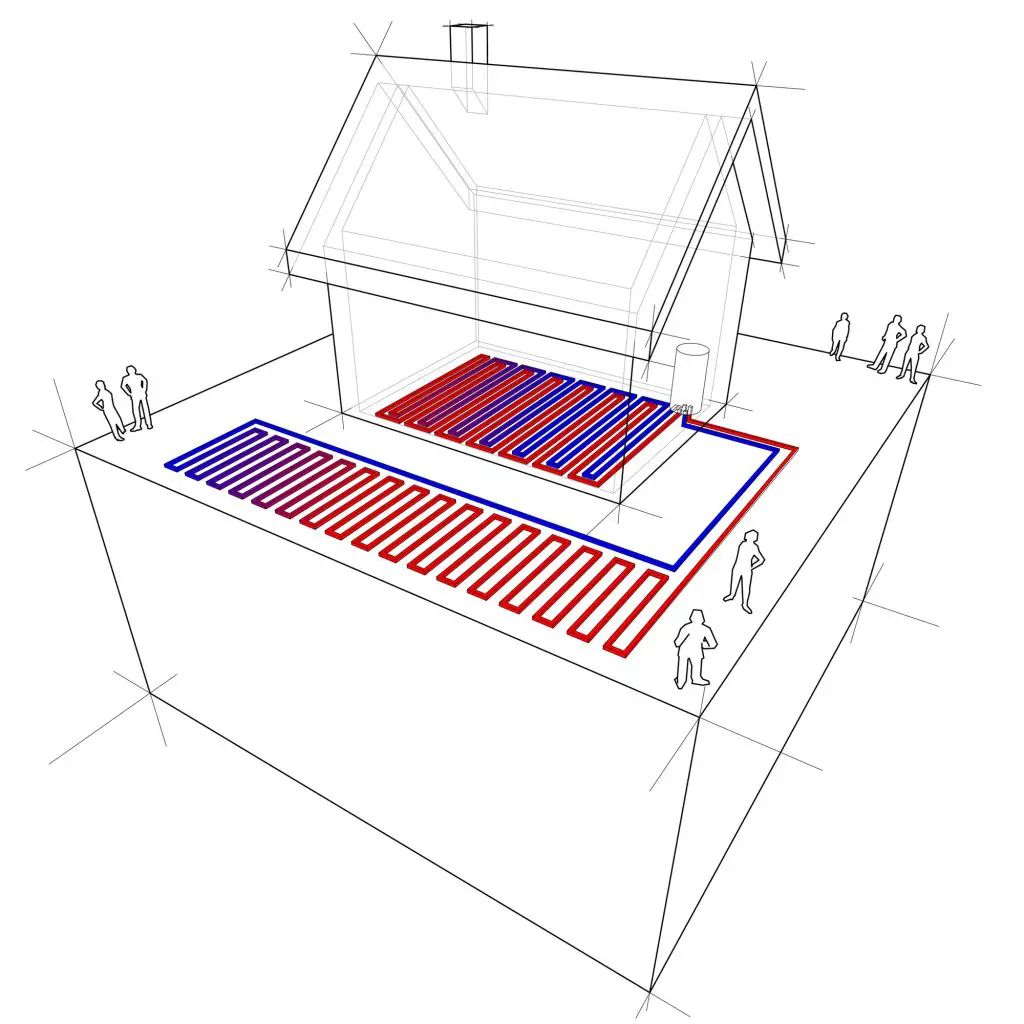A heating system needs to operate all year round, especially in cold weather conditions in the depths of winter. Ground source heat pumps in winter will still work, they have stable heat production all year round, though their efficiency may fall the colder it gets.
Geothermal Heat Pumps work well in cold climate (below 0F) conditions. The temperature of the earth beneath the ground remains at a stable range of 50-60F at a depth of up to 10ft below the ground. This stability of the ground’s temperature ensures geothermal heat pumps work efficiently in winter.
Whilst there is not normally a working minimum ground temperature for geothermal heat pumps, the system may become too inefficient to use at extremely low temperatures, rather than mechanically breaking down due to frozen refrigerant fluid.
Although there are cases whereby the efficiency of ground source heat pumps begins to drop in extreme cold weather conditions (for example in Alaska). This article will shed more light on the necessary steps to take into consideration when installing these heat pumps in cold regions.

How do ground source heat pumps work?
A ground source heat pump uses thermal energy captured from the ground, which is then used to heat a building. In order to transfer heat from the ground beneath your garden, underground pipes are laid out in either a horizontal array or inside a deep vertical borehole.
Due to the relatively constant temperatures below the surface, a ground source heat pump system can be used all year round. An underground pipe network, also known as a ground array or ground loop, is laid a few meters under the surface (in a horizontal array) and is filled with a mix of antifreeze and water.
Solar energy is absorbed and stored in the ground all year round, the pipes laid beneath the soil absorb this heat and the fluid running through them warms up. The fluid runs through the pipe system and back to a control hub inside the home. The control hub then uses expression and contraction technology to efficiently extract this heat from the pipe fluid, which then continues to circulate around the array.
The warmed water will then circulate into a heat-emitting system within the home, for example, underfloor heating or radiators.

Ground-source heat pumps generate heat based on the length of the ground loop. If your house is bigger, you’ll need a longer ground loop.
Does the Efficiency of Ground Source Heat Pumps drop in Cold Weather Conditions?
The efficiency of geothermal heat pumps reduces as the temperature begins to drop drastically if the ground source heat pumps are not well installed. The efficiency of these heat pumps could drop to about 200%, which is still quite impressive compared to other heat pumps whose efficiency under normal working conditions is still less than 100%.
On average, the efficiency of Ground Source Heat pumps in normal working conditions is around 400%, i.e. for every 1KW of energy consumed, they generate about 4KW of heat in return, giving it a Coefficient of Performance of 4. Unlike other heat pumps whose efficiency is within the range of 67-99%.
This decrease in efficiency can be prevented by making the necessary research regarding the land topology, previous occurrence of frost in the ground, soil texture.

What Determines the Efficiency of a Ground Source Heat Pump?
The efficiency of a ground source heat pump is dependent on the following factors:
- Design and Installation of the system: This is the major factor that determines the efficiency of geothermal heat pumps, especially in a region with very cold climates. The size of the ground loop, the depth of the ground loop, and the heating requirements of the house need to be taken into proper consideration to ensure maximum efficiency of the system at all times.
The use of ground loops with a small surface area will lead to thermal imbalances across the ground since the pipes draw heat from only that particular area, which could also lead to a drop in the ground temperature of that particular region.
Also, during extreme cold weather conditions(below 0C), ground loops close to the topmost layer of the earth begin to experience a decrease in temperature as a result of the ground frost. To prevent this, it is advisable to make use of vertical (borehole) systems in these regions or to make use of horizontal systems with at least a depth of 10ft from the top surface area.
- Heat Distribution System (heat emitting system) and Size: Since ground source heat pumps heat up gradually, they are best used with underfloor heating systems to help ensure maximum heat distribution across the room due to their large surface area.
Geothermal heat pumps could also be used with radiators, but they are less efficient compared to underfloor heating systems. The size of the radiator used in the room plays a huge role in the efficiency of these systems to meet the heating requirement of the room. Larger radiators will lead to higher running for electricity use.
The type of radiators used should also be compatible with low heating temperatures to maximize the efficiency of the system.
- Insulation: In cold weather conditions, Home insulation plays a vital role in preserving the efficiency of geothermal heat pumps. Due to these low temperatures, heat loss from the home as a result of poor home insulation will lead to a drastic drop inefficiency of the system, making the system underperform.

What happens to Ground Source Heat Pumps at Low Temperatures?
At very low temperatures (between 20 to -10F), ground loops that are not properly buried (below 10ft) tend to experience a drop in temperature making them not able to function appropriately. This could also result in the freezing of the pipes used for the ground loops.
Since the fluids in the ground loops contain antifreeze (propylene glycol), it prevents the fluid from freezing under extremely cold conditions by lowering its boiling point. In some ground loops, the refrigerant R-410A is used as the fluid in the pipes.
Ground Source Heat Pumps in Winter – Key points
The efficiency of ground source heat pumps in cold weather conditions is dependent on the size of the ground loops and the depth of the ground loops (for vertical ground arrays). Ground loops must be sized and placed optimally for the geothermal heat pump to work efficiently under extreme cold weather conditions.
A ground source heat pump will still produce energy even down to very cold ground temperatures. It is likely, at extremely cold temperatures, that the efficiency of the system will fall to a level where it takes more energy to operate the system than the energy gained back. This may happen long before it becomes cold enough for the refrigerant fluid itself to freeze.
